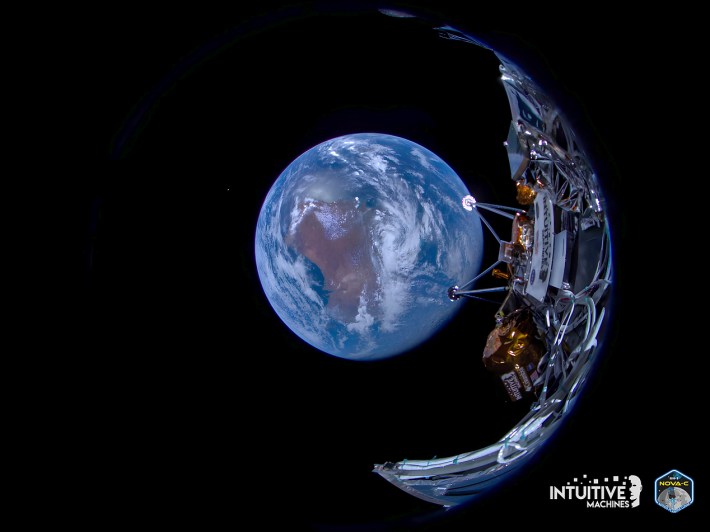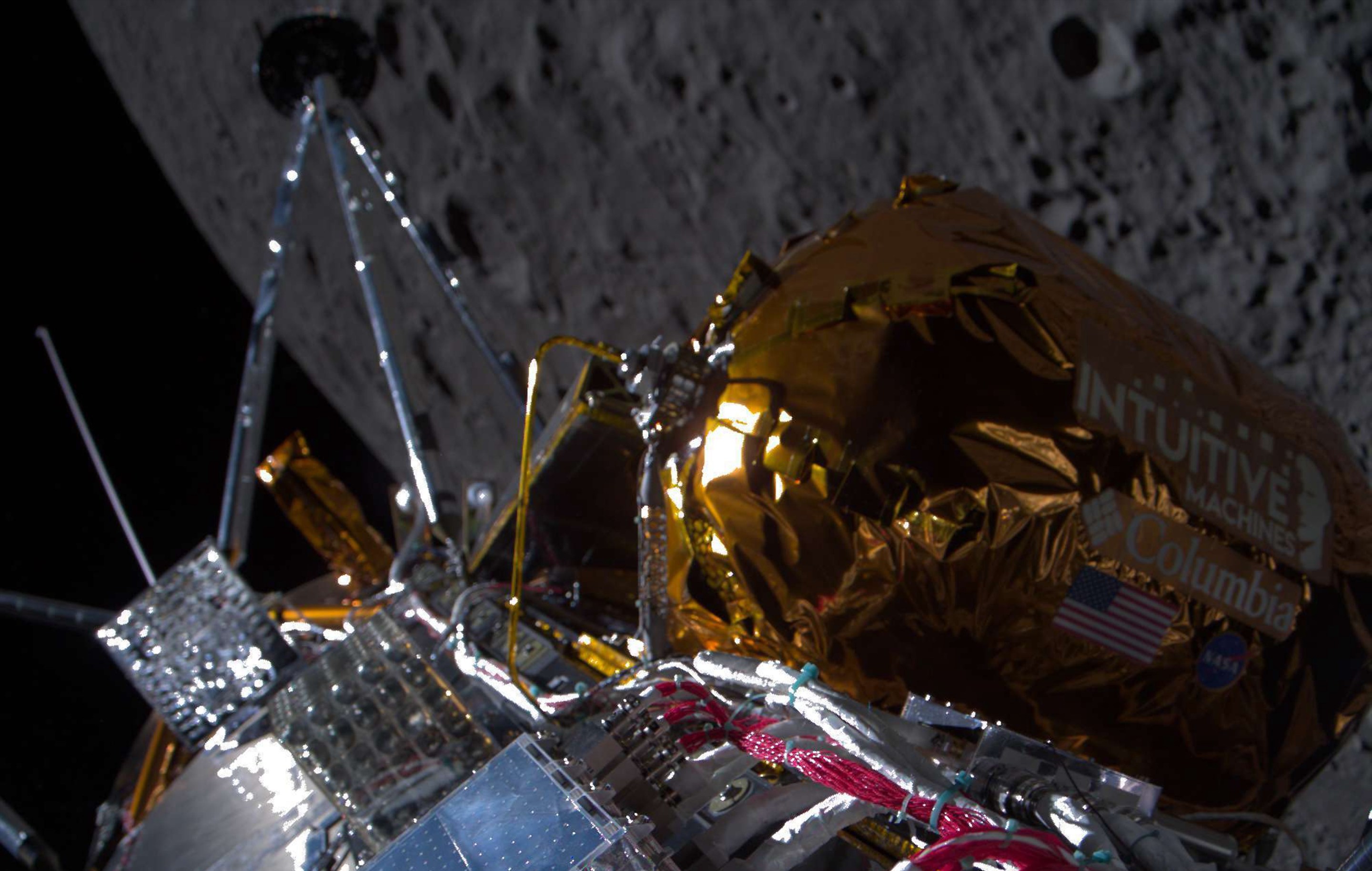Going to the Moon is hard. John Kennedy claimed that was the entire point of doing it—but he had no frickin' idea how right he was. It would be another seven years before Apollo would get there, and now, even 62 years later, there are still a million more ways to screw it up than to get it right. Thursday evening (Eastern Time; unclear yet what time it was in Moon Time), Odysseus became the first U.S.-built craft to land successfully on the lunar surface since the last Apollo mission in 1972, and the first ever private mission to do it. It was a close-run thing. Actually, it was nearly a disaster. But some fortuitous cargo and a MacGyver-ass fix got it down safely.
Commercial spaceflight is the way of the future, as little as I like the fact. Space agencies are increasingly turning to private companies to handle all aspects of missions, from instrument construction to launch to mission control to spacecraft themselves. This is happening for all the reasons you would assume: NASA et. al. expect to save money by outsourcing entire programs to contractors rather than doing things in-house; the competition among contractors is supposed to keep costs down and innovation up; those companies intend to make lots and lots of money developing and selling their technology. Whether this will all actually happen is anyone's guess, except that last one: some people will definitely make money. It's a profoundly depressing evolution of spaceflight for anyone dumb and/or idealistic enough to still be moved by the idea of exploration for exploration's sake—your author is among them—but pretending it's not happening isn't gonna put boots on Mars.

Intuitive Machines, a private aerospace company based in Houston, took off last week on a launch vehicle made by SpaceX, another private company. On board were a number of payloads, ranging from scientific to commercial, educational, and artistic. (Had the Jeff Koons sculpture aboard accidentally been ejected into the sun, I would not mourn.) One of those payloads saved Odysseus's shiny metal ass.
Thursday morning, it was determined that Odysseus's rangefinder cameras were not working and could not be brought back online. This was bad, as you might expect: Without knowing how far it was from the lunar surface, the lander would whack into it like an egg dropped from a rooftop. Some quick thinking was called for. One of the experiments on board was NASA's Navigation Doppler Lidar. Lidar, an acronym for light detection and ranging, is a pretty simple concept to grasp—bounce a laser off something and figure out how far it is based on how long it takes the light to bounce back. It's incredibly efficient, and data-intensive. (You might know it best as "that technology Elon Musk refuses to use in his self-driving cars because he's cheap.")
But NASA's Lidar package on Odysseus wasn't meant to be used for this mission, merely tested. But what if?, some smart engineers asked themselves. Some code was hastily written instructing Odysseus to tap into that Lidar package and use it to actually land the damn thing, and uploaded their code Thursday with crossed fingers.
"We put this as a tech demo and as a test, we weren't planning to use it in line with the actual mission, but now we are." said NASA deputy associate Prasun Desai. "It is now the primary system to help provide the velocity and altitude information so that the lander can land safely on the surface."
This is sort of but not at all like a passenger landing a jumbo jet after the pilots are incapacitated. And they wouldn't know if it worked until Odysseus either landed or crashed.
There were still some squeaky-bum moments to be had. For nearly 10 minutes after Odysseus touched down, it kept radio silent, leading observers to fear it had either landed tipped-over, like JAXA's SLIM did last month, or gone smashy-smashy. Then Houston finally received a signal—"We're not dead yet," said mission director Tim Crain—but it was faint, threatening some sort of communications issue that would put the planned week-long mission in jeopardy. A few hours later, Intuitive Machines announced that they had gotten comms up and running. "Odysseus is alive and well," the company confirmed this morning. For something that eventually got where it was going but not without some delays and high drama, I'd say they picked a pretty apt name for the lander.






